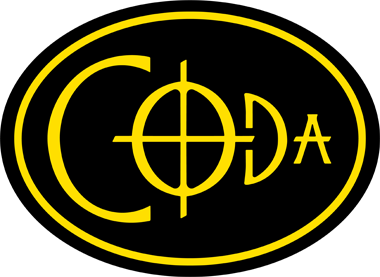Power Tip: Silent Fingering Exercises
If you’d like a way to accelerate your progress toward playing Coda in a more confident, fluid manner, here’s a tip that I hope you’ll put into practice. This practice technique takes full advantage of Coda’s portability. It’s what I call “Silent Fingering Exercises.” As you might guess, I call these Silent because you don’t actually blow into the mouthpiece when you do them.
Now, the cool thing about Silent Fingering Exercises is that you can do them just about any time, especially while listening to a favorite podcast or watching a TV program. I’ve done this a bunch of times while sitting back with my feet up, watching a movie with my wife.
The concept is simple. Without actually blowing into the mouthpiece, put Coda up to your mouth, or up to your chest, and do simple, mindless fingering exercises on Coda. Of course, if you hold Coda up to your mouth, you can also practice chamber switching with your mouth, but just working on the fingering with Coda at your chest is super productive too.
An example of a good Silent Fingering Exercise for beginners is to just finger up and down the C scale. On the lower chamber, finger the notes C, D, E, F, G, A, B, C, and you can add in D too. At first, just stick to one octave. Whenever that gets super easy, move onto two octaves. When that becomes fluid and easy, start changing the note on which you cross over from one sound chamber to another. During a movie, you can easily practice a scale –I don’t know– hundreds of times with no problem. As you do, you are gradually building fluidity and are shaping muscle memory. At first, the scale feels slow, stilted, awkward… Over several sessions, your fingers gradually start to move in an ever quicker, more confident, more fluid manner. And little by little, Coda starts to feel like a natural extension of your own hands, like it’s part of you. You pick up Coda, and your fingers feel like they’re at home.
But whatever Silent Fingering Exercise you invent, keep it simple enough so that you can pay attention to whatever you’re listening to. If you get tired, take a rest. Even doing it for just a few minutes is very productive. To be perfectly clear, sometimes you really do have to concentrate a lot to get an exercise up and running, but after some repetitions it should usually become sort of unthinking, like eating while listening to the radio.
By the way, if you find this just too mentally fatiguing, it’s probably because you’re trying too hard to multitask, so try narrowing the scope of your fingering exercise. Make it simpler. Be patient. If you take one little baby step each week, at the end of a year you’ll have covered a lot of ground.
So now you have a new strategy. Whenever you stumble upon a particular fingering sequence or chamber switch that seems awkward or downright hard, you have the opportunity to zero in on it and practice it hundreds, even thousands of times, while doing something else that you enjoy.
Let me give you one more concrete example. Let’s say that you are playing a tune and you find it a bit awkward to quickly and smoothly switch back and forth between low E and low F sharp. Well, make a note of that, and zero in on that particular movement and practice it over and over for a few minutes the next several times you watch TV. Think about it! If the only time you ever practice that particular fingering sequence is when it randomly comes up in a song, you’ll probably still be struggling with it a year from now. But if you zero in on it with Silent Fingering Exercises, it won’t be long before it’s a piece of cake and you’re ready to move onto the next challenge.
Eventually, not right at first but eventually, you can use Silent Fingering Exercises to grow super confident with all Coda’s sharps and flats.
Like anything else in life, if you stick with it, little by little you’ll go a long way. Silent Fingering Exercises can really help you to pick up the pace.




